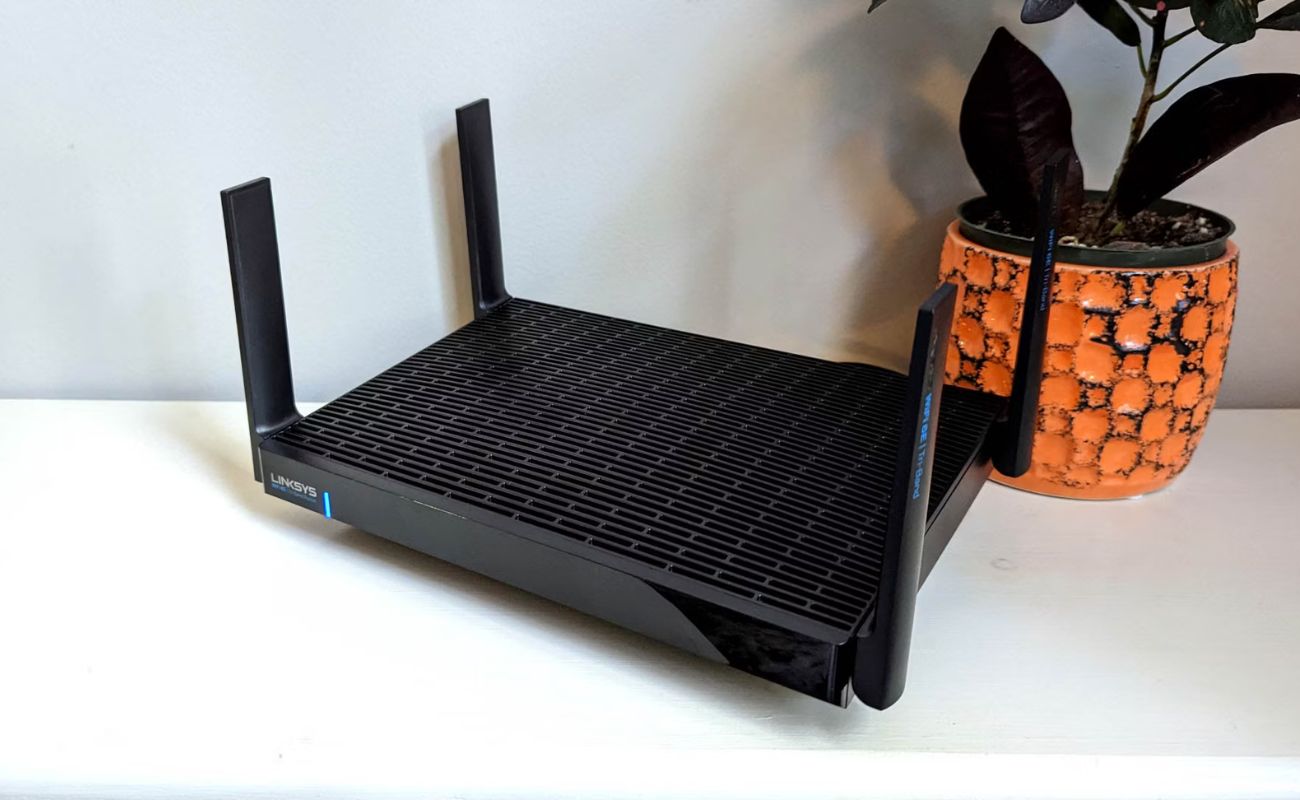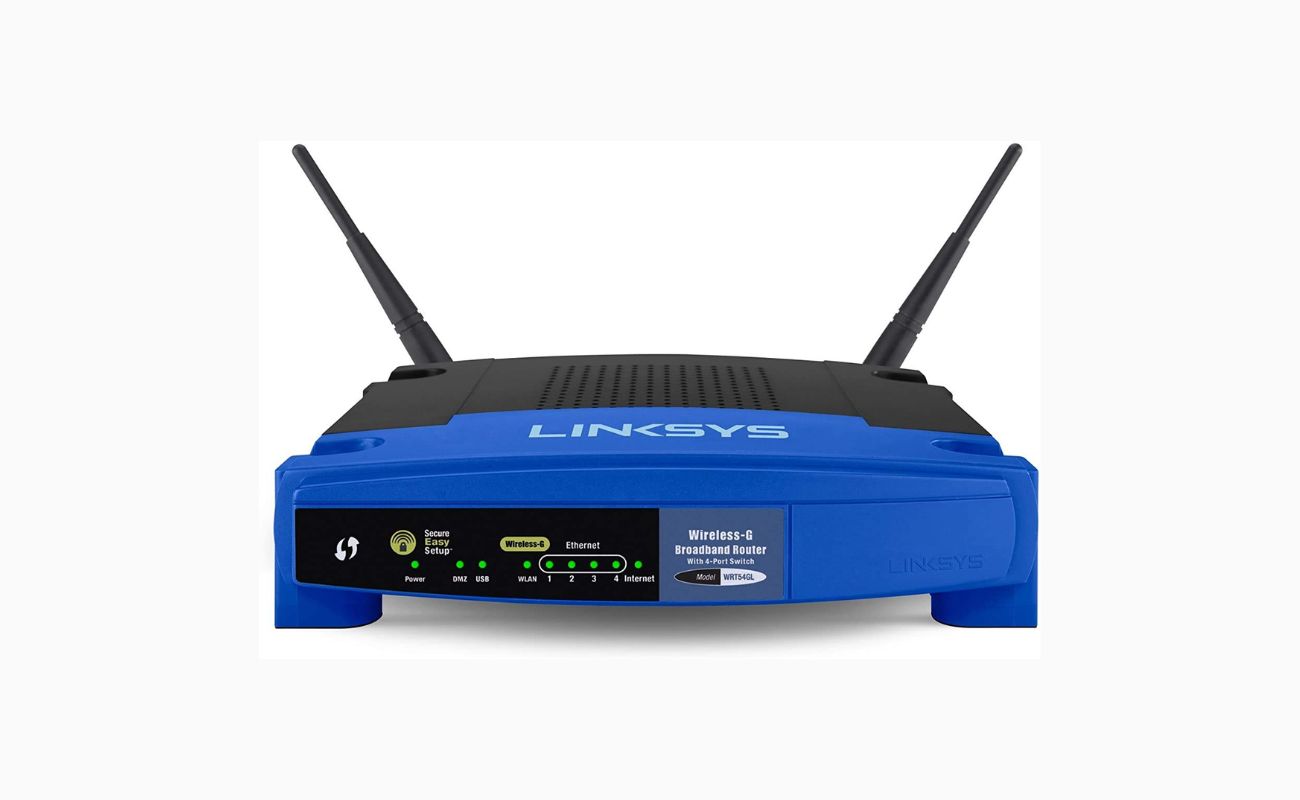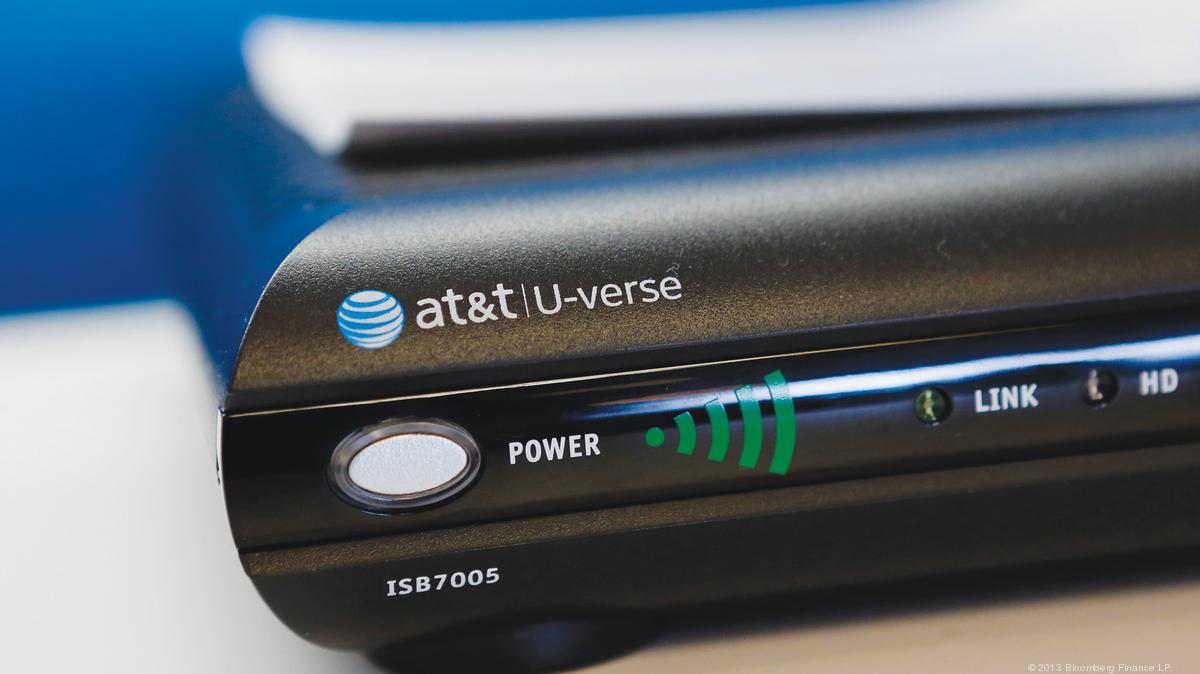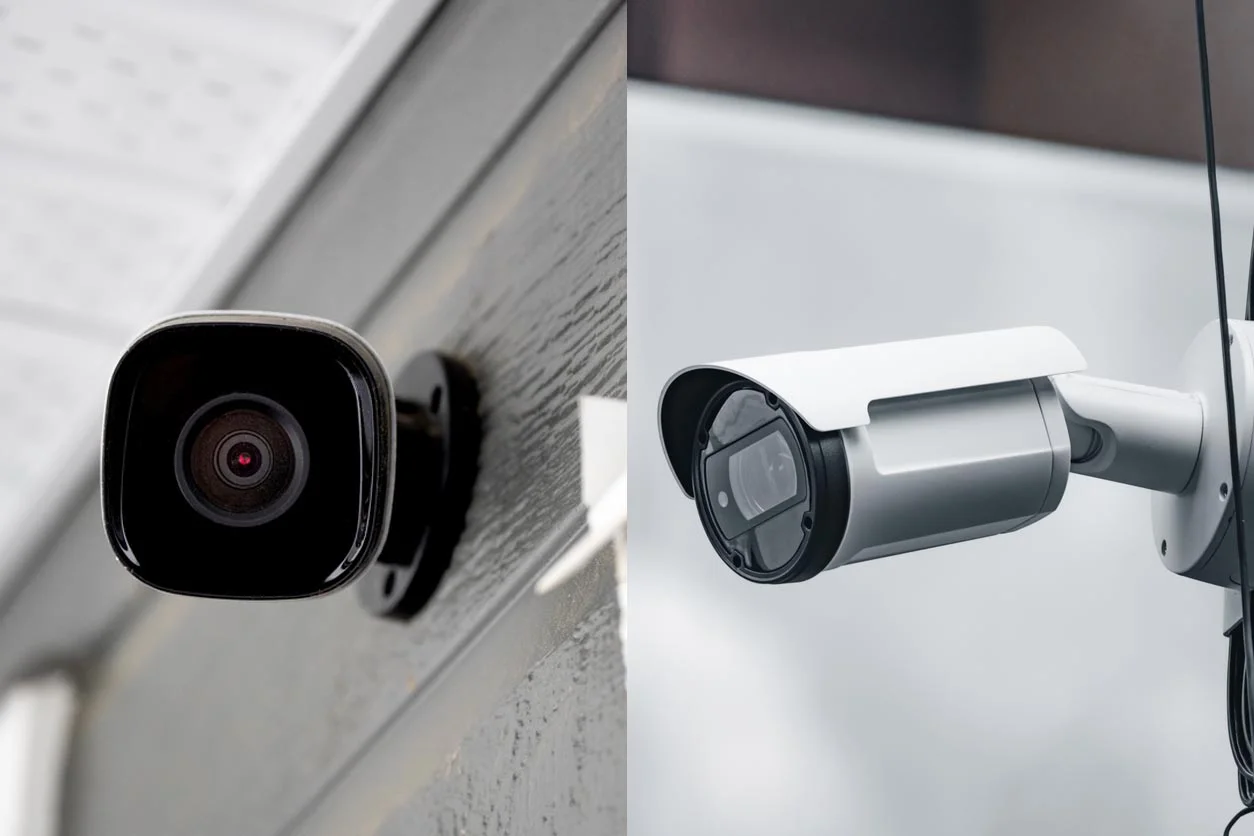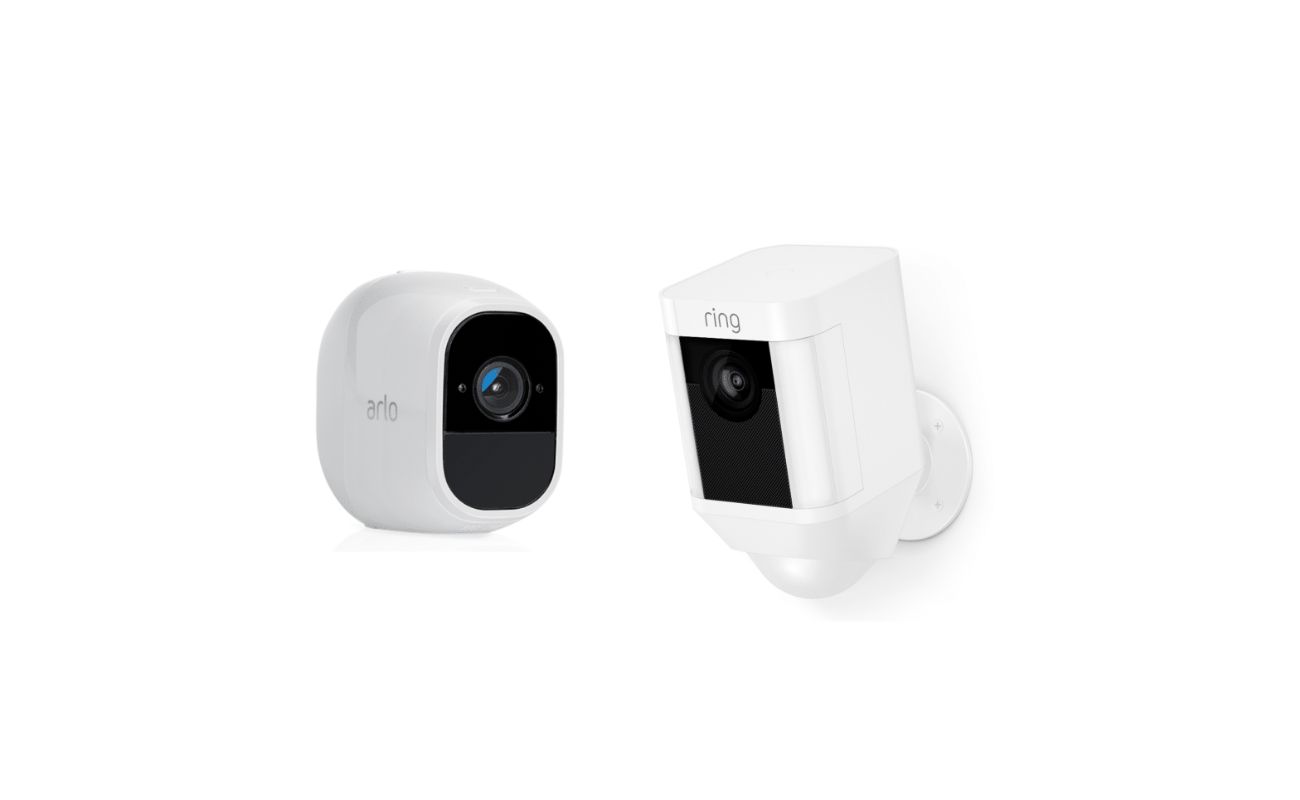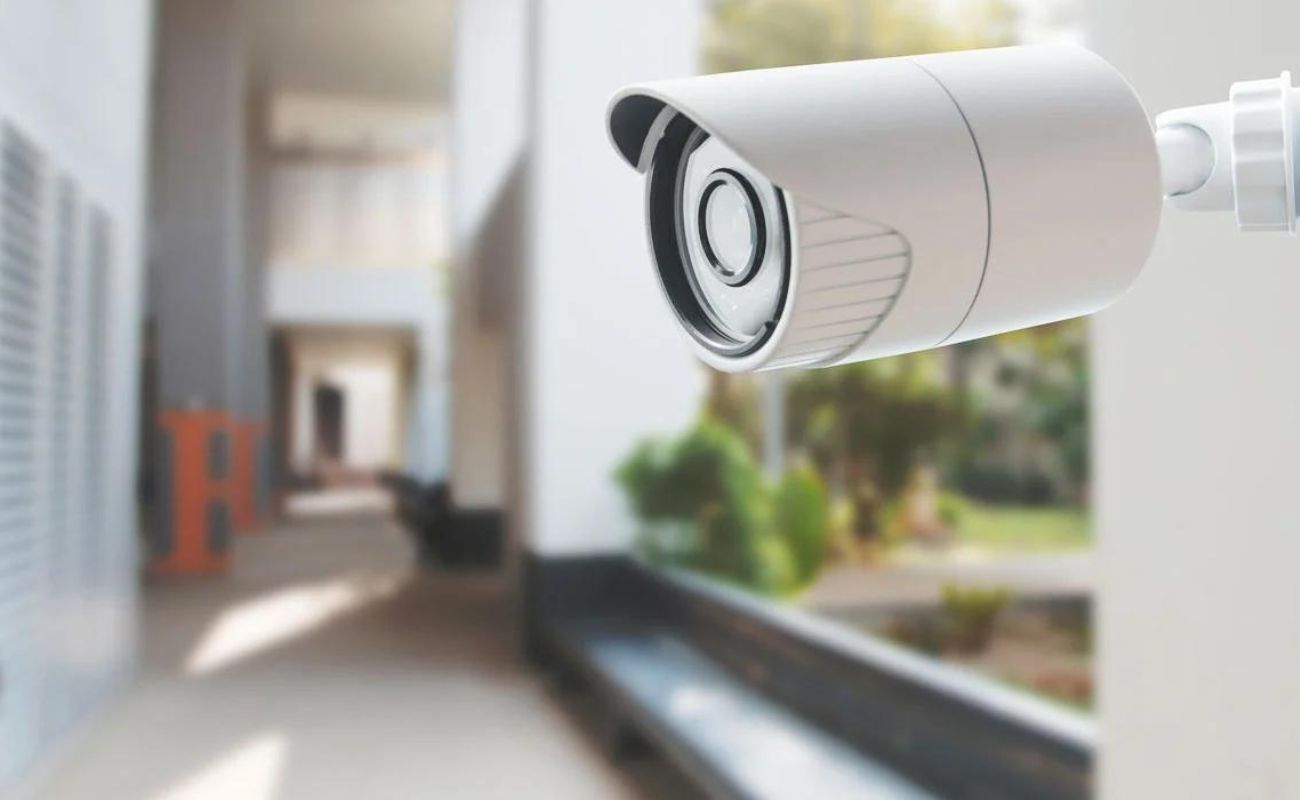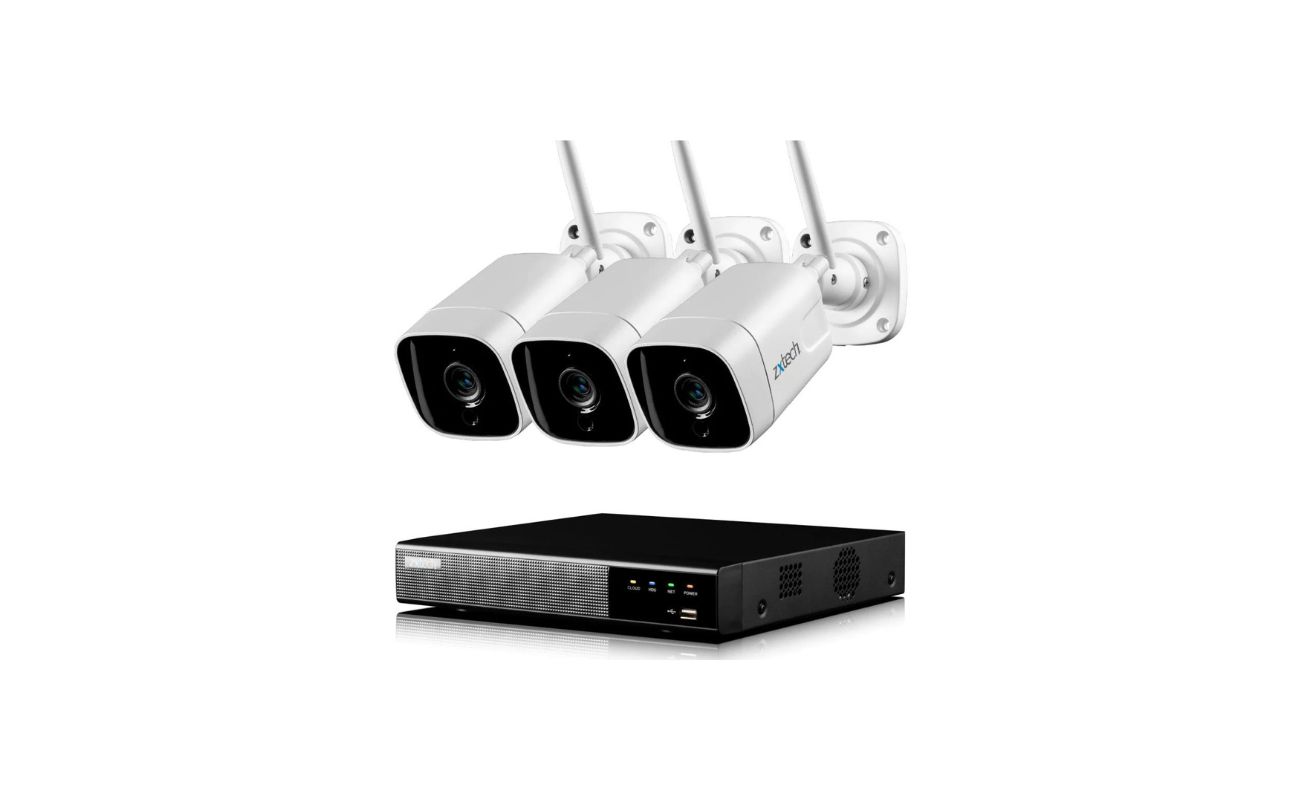Home>Home Security and Surveillance>Which Wireless Security Protocol Relies On Perfect Forward Secrecy?


Home Security and Surveillance
Which Wireless Security Protocol Relies On Perfect Forward Secrecy?
Modified: October 28, 2024
Discover the wireless security protocol that relies on perfect forward secrecy to enhance your home security and surveillance. Explore the benefits of this advanced technology now!
(Many of the links in this article redirect to a specific reviewed product. Your purchase of these products through affiliate links helps to generate commission for Storables.com, at no extra cost. Learn more)
Introduction
Securing our homes and protecting our loved ones is a top priority for many homeowners. With advancements in technology, home security and surveillance systems have greatly evolved, offering innovative solutions to keep our homes safe. Wireless security protocols play a crucial role in ensuring the confidentiality and integrity of our home security systems.
One important aspect to consider when evaluating the effectiveness of wireless security protocols is the concept of Perfect Forward Secrecy (PFS). Perfect Forward Secrecy is a cryptographic property that provides an added layer of security by ensuring that each session key is unique and cannot be derived from any previous or future session keys. This enhances the security of the encryption used in wireless communication.
In this article, we will explore the concept of Perfect Forward Secrecy and identify the wireless security protocol that relies on this advanced cryptographic feature. We will also delve into the benefits, advantages, potential limitations, and challenges of implementing Perfect Forward Secrecy in home security and surveillance systems. So, let’s get started!
Key Takeaways:
- TLS is the wireless security protocol that uses Perfect Forward Secrecy, ensuring unique session keys for each session, adding an extra layer of security for home surveillance systems.
- Perfect Forward Secrecy enhances security by protecting past and future sessions, but its implementation may require careful consideration of computational resources and compatibility.
Read more: Which Wireless Security Protocol Uses AES
Definition of Perfect Forward Secrecy
Perfect Forward Secrecy (PFS) is a property of cryptographic protocols that ensures the security of encrypted communications by generating unique session keys for each session. Unlike traditional encryption methods where a single, long-term key is used for multiple sessions, PFS uses a different session key for each session, even if the same participants are involved.
The key advantage of Perfect Forward Secrecy is that even if an attacker manages to obtain or compromise a session key, they cannot use it to decrypt past or future sessions. Each session key is generated independently, and the compromise of one key does not impact the security of other sessions.
PFS achieves this by employing Diffie-Hellman key exchange, which allows two parties to establish a shared secret over an insecure channel without exchanging the secret directly. This shared secret is used to derive a unique session key for each session.
Furthermore, PFS protects against passive eavesdropping attacks wherein an attacker intercepts encrypted communications and stores them for decryption in the future. Since each session key is unique, any previously intercepted encrypted communication remains secure, as the attacker cannot derive the session key used for that specific session.
Overall, Perfect Forward Secrecy adds an extra layer of security to encrypted communications by ensuring that even if a session key is compromised, the confidentiality of past and future sessions remains intact. This makes it an essential component of secure wireless communication protocols.
Overview of Wireless Security Protocols
Wireless security protocols are crucial in protecting our home security and surveillance systems from unauthorized access and data breaches. These protocols establish a secure connection between devices, ensuring that the data transmitted over the wireless network remains confidential and protected against malicious attacks.
Let’s take a look at some of the commonly used wireless security protocols:
- WEP (Wired Equivalent Privacy): WEP was one of the early encryption protocols used in wireless networks. However, it has several vulnerabilities and is no longer considered secure. It is highly recommended to avoid using WEP for home security purposes.
- WPA (Wi-Fi Protected Access): WPA was introduced as a stronger security protocol to replace the vulnerabilities of WEP. It offers two versions, WPA-PSK (Pre-Shared Key) and WPA-Enterprise. WPA-PSK uses a shared key for authentication, while WPA-Enterprise utilizes a centralized authentication server.
- WPA2 (Wi-Fi Protected Access II): WPA2 is the most widely used wireless security protocol today. It provides stronger encryption and security features compared to WPA. WPA2-PSK and WPA2-Enterprise are the two versions of WPA2, similar to WPA.
- WPA3 (Wi-Fi Protected Access 3): WPA3 is the latest iteration of the Wi-Fi security protocol and offers enhanced security features. It addresses vulnerabilities found in WPA2 and introduces new encryption algorithms, making it more resistant to attacks.
While these wireless security protocols provide varying levels of protection, the protocol that relies on Perfect Forward Secrecy (PFS) takes the security of our home security systems to the next level. Let’s explore which wireless security protocol incorporates this advanced feature.
Criteria for Examining Wireless Security Protocols
When evaluating different wireless security protocols, it is essential to consider certain criteria to ensure the overall effectiveness and reliability of the protocols. These criteria help determine the level of security provided and the suitability of the protocol for specific applications, such as home security and surveillance systems. Let’s explore the key criteria for examining wireless security protocols:
- Encryption Strength: The strength of the encryption algorithm used in the protocol is crucial. Look for protocols that utilize strong encryption algorithms, such as AES (Advanced Encryption Standard), which offer robust protection against attacks.
- Authentication: The protocol should have a robust authentication mechanism to ensure that only authorized devices can access the network. Look for protocols that support strong authentication methods, such as certificates or 802.1X authentication.
- Key Management: Effective key management is essential for maintaining the security of the wireless network. The protocol should provide secure methods for key distribution and rotation to prevent unauthorized access to the network.
- Perfect Forward Secrecy (PFS): PFS is a desirable feature that provides additional security by generating unique session keys for each session. Protocols that incorporate PFS offer enhanced protection against key compromise and ensure the confidentiality of past and future sessions even if a session key is compromised.
- Resistance to Attacks: The protocol should be resistant to common attacks, such as brute force attacks, replay attacks, and dictionary attacks. Look for protocols that have built-in mechanisms to detect and mitigate these types of attacks.
- Scalability: Consider the scalability of the protocol, especially if you have a large number of devices connected to the network. The protocol should be able to handle the bandwidth and security requirements of a growing number of devices without compromising performance.
- Wireless Range: Evaluate the range of the wireless protocol and ensure that it covers the desired area for your home security and surveillance system.
- Industry Standards: It is advisable to choose protocols that are widely adopted and supported by industry standards to ensure compatibility with various devices and systems.
By examining wireless security protocols based on these criteria, you can make informed decisions to choose the most suitable protocol that meets the security requirements of your home security and surveillance systems.
The Wireless Security Protocol that Relies on Perfect Forward Secrecy
Among the various wireless security protocols available, the Transport Layer Security (TLS) protocol is the one that incorporates Perfect Forward Secrecy (PFS) to enhance the security of encrypted communications.
TLS is a cryptographic protocol that ensures the secure transmission of data over a network, such as the internet. It is widely used in applications that require secure communication, including web browsing, email, and online transactions.
When it comes to home security and surveillance systems, implementing TLS with PFS provides an added layer of security. In TLS, Perfect Forward Secrecy is achieved by using Diffie-Hellman (DH) key exchange algorithms.
During the TLS handshake process, the client and server negotiate a session key using a DH key exchange. This session key is used to encrypt and decrypt the data exchanged between the client and server during the session. The crucial aspect is that the session key is not derived directly from the long-term encryption keys but is generated independently for each session.
Even if an attacker manages to compromise the session key of a specific session, the use of PFS prevents them from decrypting any past or future sessions. Each session key is unique and not derived from any previous or future session keys, ensuring the confidentiality of the data transmitted.
By incorporating PFS in TLS, the security and privacy of home security and surveillance systems are significantly enhanced. It protects against potential threats, such as the compromise of long-term encryption keys or the interception and storage of encrypted communications for decryption in the future.
It is important to note that while TLS with PFS secures the communication channel between devices, it is essential to ensure that the underlying hardware and software systems are also secure and regularly updated to mitigate other potential vulnerabilities.
Overall, TLS with Perfect Forward Secrecy is the wireless security protocol that provides an additional level of security for home security and surveillance systems. It ensures that the confidentiality and integrity of the data transmitted remain protected, making it a vital component of a comprehensive security strategy.
Use WPA3 for wireless security as it relies on Perfect Forward Secrecy, which means that even if a hacker captures your data, they can’t decrypt past sessions.
Benefits and Advantages of Perfect Forward Secrecy
Perfect Forward Secrecy (PFS) offers several benefits and advantages that make it a highly desirable feature in wireless security protocols. Let’s explore some of the key advantages of implementing PFS:
- Enhanced Security: PFS provides an additional layer of security by generating unique session keys for each session. Even if a session key is compromised, the security of past and future sessions remains intact. This ensures that the confidentiality and integrity of the data transmitted over the wireless network are protected against potential attacks.
- Protection against Key Compromise: PFS mitigates the risk associated with the compromise of long-term encryption keys. Since each session key is independent of any previous or future session keys, the compromise of one key does not impact the security of other sessions. This adds an extra level of protection against unauthorized access to the network.
- Resistance to Passive Eavesdropping: PFS safeguards against passive eavesdropping attacks, where an attacker intercepts encrypted communication and stores it for decryption in the future. As each session key is unique, any encrypted communication that was intercepted in the past remains secure, as the attacker cannot derive the session key used for that specific session.
- Improved Forward Security: PFS ensures forward security, which means that even if an attacker compromises the long-term encryption keys in the future, they cannot decrypt the past sessions. This is pivotal in maintaining the security of sensitive data, such as live video feeds from home security cameras or access control information.
- Efficient Key Management: Implementing PFS simplifies key management by utilizing shorter duration session keys instead of relying solely on long-term encryption keys. This reduces the complexity of managing and protecting long-term keys and facilitates efficient key distribution and rotation protocols.
- Compliance with Privacy Regulations: PFS aligns with privacy regulations and best practices for data protection. Implementing this advanced cryptographic feature demonstrates a commitment to safeguarding user privacy and ensuring compliance with relevant regulations, such as the General Data Protection Regulation (GDPR).
Overall, Perfect Forward Secrecy offers significant benefits and advantages in terms of enhanced security, protection against key compromise, resistance to passive eavesdropping, improved forward security, efficient key management, and compliance with privacy regulations. It is a vital feature to consider when evaluating wireless security protocols for home security and surveillance systems.
Potential Limitations and Challenges of Perfect Forward Secrecy
While Perfect Forward Secrecy (PFS) provides an extra layer of security for wireless communication, it is important to understand the potential limitations and challenges associated with its implementation. Let’s explore some of the key considerations:
- Computational Resources: Implementing PFS requires additional computational resources compared to traditional encryption methods. The generation of unique session keys and the use of complex cryptographic algorithms can impose a higher processing burden on devices, especially resource-constrained devices such as IoT devices or older hardware.
- Increased Latency: The additional complexity associated with PFS can lead to increased latency in establishing secure connections. The generation of session keys and the necessary cryptographic computations take time, potentially causing a slight delay in the establishment of secure communications. This may impact real-time communication requirements in some scenarios.
- Compatibility: PFS may not be supported by all devices or software applications. In some cases, older or less secure devices may not have the capability to utilize PFS protocols. Compatibility issues can arise when trying to establish secure connections between devices using different encryption protocols or older versions of software that do not support PFS.
- Management Complexity: Efficiently managing and rotating session keys can be more complex than managing long-term encryption keys. Proper key management practices are crucial to ensure continuous security and avoid potential vulnerabilities due to the mismanagement of session keys.
- Key Distribution: The secure distribution of session keys between devices can be challenging, especially in large-scale deployments or environments with a high number of interconnected devices. Establishing a secure and efficient key distribution mechanism becomes crucial to maintain the security of the system.
- Backward Compatibility: Some older devices or legacy systems may not support PFS protocols. Ensuring backward compatibility with these devices while maintaining a high level of security can be a challenge, as it may require a careful balance between security requirements and compatibility with legacy systems.
These limitations and challenges should be considered when implementing Perfect Forward Secrecy in wireless security protocols. It is important to assess the feasibility and compatibility of PFS in relation to the specific requirements and constraints of the home security and surveillance systems to achieve an optimal balance between security and usability.
Comparison with Other Wireless Security Protocols
When it comes to securing wireless communication, various protocols are available, each offering different levels of security. Let’s compare Perfect Forward Secrecy (PFS) with other commonly used wireless security protocols to understand their differences and advantages:
- WEP (Wired Equivalent Privacy): WEP was one of the earliest wireless security protocols, but its encryption is weak and easily compromised. It lacks forward secrecy and has vulnerabilities that make it unsuitable for secure home security and surveillance systems.
- WPA (Wi-Fi Protected Access): WPA improved upon the weaknesses of WEP and introduced stronger encryption. However, it does not inherently provide perfect forward secrecy. While WPA2 and WPA3 offer better security options, they still do not provide the same level of forward secrecy as PFS.
- TLS (Transport Layer Security): TLS is a cryptographic protocol used to secure various applications, including web browsing and email. It incorporates Perfect Forward Secrecy (PFS) through the use of session keys that are generated independently for each session. This ensures that even if a session key is compromised, the confidentiality of past and future sessions remains protected.
- IPsec (Internet Protocol Security): IPsec is a suite of protocols used to secure IP communications. While it offers strong encryption and authentication mechanisms, it does not provide perfect forward secrecy by default. However, it can be combined with Diffie-Hellman key exchange to achieve forward secrecy.
Compared to WEP and WPA, PFS in protocols like TLS provides a higher level of security by ensuring that compromised session keys do not affect the security of other sessions. While WPA2 and WPA3 improve upon the weaknesses of WEP, they still lack the inherent forward secrecy offered by PFS.
Both TLS with PFS and IPsec can provide strong security for wireless communication. However, TLS is more commonly used for applications involving web browsing, email, and online transactions, while IPsec is typically used for securing IP-based communication between networks.
In terms of forward secrecy, TLS stands out as the wireless security protocol that explicitly incorporates PFS, ensuring the confidentiality and integrity of past and future sessions even if a session key is compromised.
It is important to consider the specific security requirements and compatibility with devices and systems when choosing a wireless security protocol for home security and surveillance systems. Implementing a protocol with Perfect Forward Secrecy offers an additional layer of security that safeguards against key compromise and ensures the confidentiality of transmitted data.
Conclusion
When it comes to protecting our homes and ensuring the security of our loved ones, implementing strong wireless security protocols is of utmost importance. Perfect Forward Secrecy (PFS) is a crucial feature that enhances the security of wireless communication by generating unique session keys for each session. This article has provided a comprehensive overview of PFS and its significance in the realm of home security and surveillance systems.
We discussed the definition of Perfect Forward Secrecy and how it ensures the confidentiality of past and future sessions even if a session key is compromised. We explored the criteria for examining wireless security protocols, including encryption strength, authentication mechanisms, key management, and the inclusion of PFS.
We identified Transport Layer Security (TLS) as the wireless security protocol that relies on Perfect Forward Secrecy. TLS, through the use of Diffie-Hellman key exchange, generates independent session keys for each session, offering an added layer of security for home security and surveillance systems.
We also highlighted the benefits of implementing Perfect Forward Secrecy, such as enhanced security, protection against key compromise, resistance to passive eavesdropping, improved forward security, efficient key management, and compliance with privacy regulations.
However, we also acknowledged the potential limitations and challenges associated with PFS, such as increased computational resources, compatibility issues, and management complexities. Careful consideration should be given to these factors when implementing PFS in wireless security protocols.
Lastly, we compared PFS with other commonly used wireless security protocols such as WEP, WPA, and IPsec, emphasizing the superior security provided by PFS through the implementation of session keys.
In conclusion, the inclusion of Perfect Forward Secrecy in wireless security protocols, particularly in home security and surveillance systems, significantly enhances the confidentiality, integrity, and overall security of our data. By choosing a protocol that incorporates PFS, homeowners can ensure that their wireless communication remains secure and protected against potential threats.
Remember, implementing the right wireless security protocol with Perfect Forward Secrecy is crucial to maintaining the safety and privacy of our homes. So, stay vigilant, select the appropriate protocols, and enjoy the peace of mind that comes with a secure home security and surveillance system.
Frequently Asked Questions about Which Wireless Security Protocol Relies On Perfect Forward Secrecy?
Was this page helpful?
At Storables.com, we guarantee accurate and reliable information. Our content, validated by Expert Board Contributors, is crafted following stringent Editorial Policies. We're committed to providing you with well-researched, expert-backed insights for all your informational needs.
